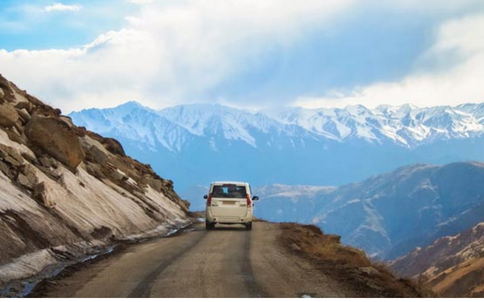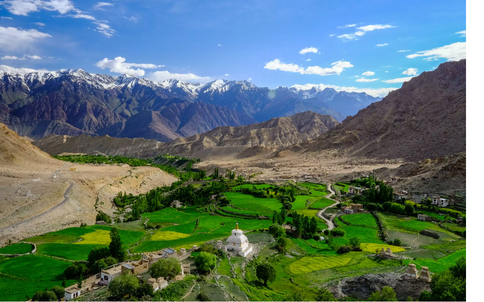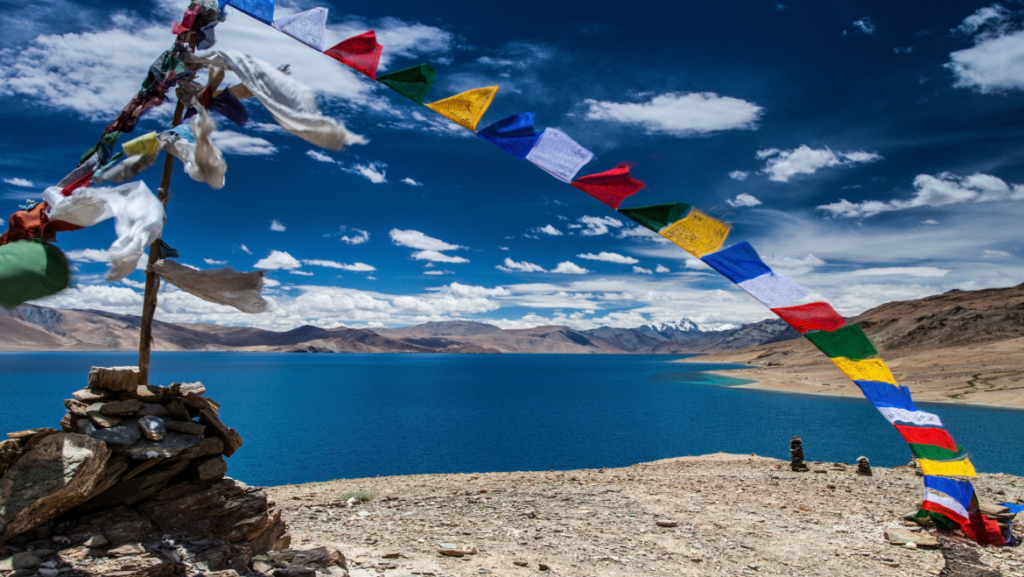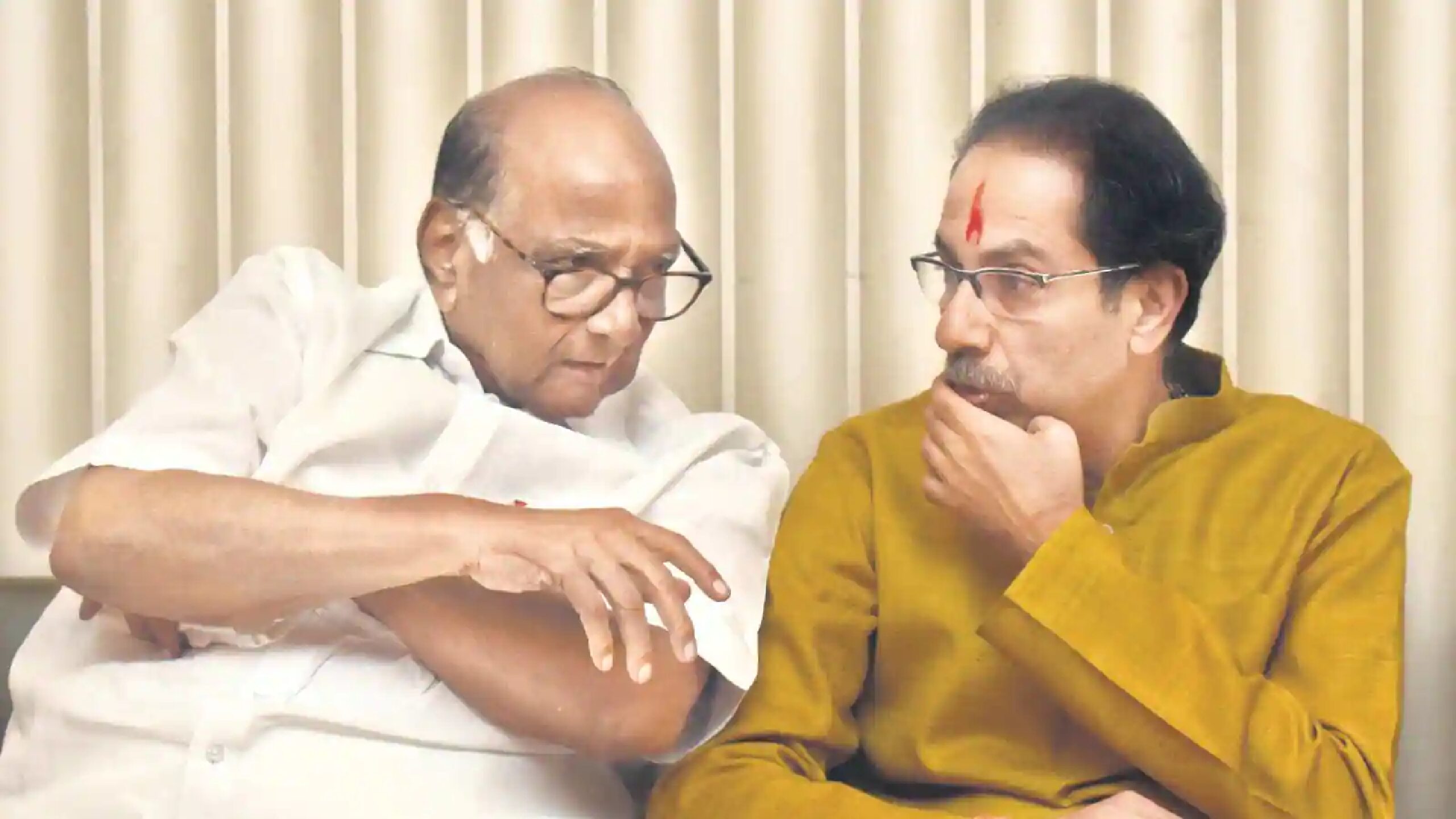We, a group of close relatives, planned a tour of Ladakh, a unique area in the Himalayan Range. Ladakh is considered ‘Shangri La’, meaning Heaven on Earth. Being a part of the Himalayas, it is covered with snow and one can visit the place only during a few summer months in a year. Leh is the important habitat of the region. There is no civilian airport but Leh has a military airport in which all planes are permitted to land. Landing takes place there only from dawn to mid-day. During the other parts of the day or night the weather and speed of wind there makes landing risky.
Also read: Train MLAs and MPs
We took off from Delhi airport for Leh at about 10.00 a.m. in the month of May. Soon we were flying over Himalayas. It was thrilling. We could not have enjoyed the snowy mountain scenery so much had we travelled by train or by car. It was an unforgettable lifetime ecstatic feeling. The snow covered peaks, sharp rocky ridges, snow filled valleys and clouds in various shapes and sizes extending to the horizon are things to be seen and enjoyed. No one would be able describe that beauty to the satisfaction of either the writer or the reader. I was not on window seat as my three year old grandson occupied it. Still I took some good photos. After an hour long journey we landed in Leh around 11.00 a.m. One of our group, Aman Deep, who had been working as an Engineer in the Airport at Leh, Ladakh, was there to receive us and to organize the tour.

In the airport there were some signboards advising us to wait in the lounge for at least half an hour. We could not understand the delay but Aman explained to us that immediate stepping out into the open will make our breathing difficult as there was less oxygen in the air at that height. He also informed us that we should go straight to our hotel and remain indoors for 24 hours as our bodies need to get acclimatized to the climate there. He warned us that if we did not heed to his advice our health will get affected and our entire tour might be spoiled. As we were about to enter our hotel there was a hailstorm, a light drizzle with tiny ice crystals. It was thrilling to receive those bits on the body. We enjoyed standing there but the drizzle lasted only for two minutes. After entering our hotel we did not stir out though there was a wonderful program of music and dance of several boys and girls just a few yards away from our hotel. Listening to the loud music we were tempted to go out and see but restrained ourselves to listening to music.
Also read: Importance of Exams and Evaluation
Negotiating breath taking curves
Our hotel was in the center of the city and some of us could not keep ourselves confined in the hotel seeing the activity in the bazaar through the French windows of our hotel. So late in the evening we all moved out for a stroll and window shopping. But after ten minutes my younger daughter’s BP was down and she had reeling sensation. Luckily, after a few minutes she recovered and we all felt relieved. We immediately returned to our hotel. It was ironic that she got affected though she tried to boost up my spirits that afternoon. As I was 70 year old she had told me that constitution of my body and my stamina were better than others and that I should not be apprehensive of movement in the icy mountain areas to be visited. Felt happy that my daughter was strengthening my confidence as I had been interested in visiting places. I just remembered a fellow traveller on my plane from Chennai to Delhi who asked me if I was an athlete, seeing my body. That too was a booster dose for me. I prayed to God that she who tried to encourage me should not have any health problem during the tour.
Next morning our 15 seat vehicle was ready to take us. Most of the roads were full of stones and boulders. Only vehicles with high ground clearance could be used there. People who unknowingly travelled in ordinary cars got them damaged and had to wait to be rescued by military trucks to carry their cars to repairing sheds. Border Roads Organization (BRO) had been building roads there but a lot more was yet to be done in that mountainous region. Our driver was good and friendly. Of course he was efficient in negotiating the breath taking curves with mountain rock on one side and a deep valley on the other. Seeing his driving I understood that driving in that area needs extraordinary skill not seen in drivers of other areas. We found local people only at very few places. They maintained shops for tourists and everything they sold was costly. We did not see any yaks on the way but there were mules and sheep.

Saluting the Kargil martyrs
Our first stop was at (Kargil) War Memorial, at a little distance from the scene of war. It was a vast area with graves of several hundreds of Kargil war martyrs. Each grave had a name plate of the hero. Seeing the graves of so many soldiers and officers we were sad. Pakistani’s stealthily occupied Kargil hill and from the high positions could easily kill many Indian soldiers as they approached the hill in their attempt to drive out the Pakistanis from that area. There was a huge flag at the memorial and all of us stood in attention before it, thanked those martyrs because of whose sacrifice we remained safe and saluted the national flag. It was an emotional moment. There was a museum called ‘Hall of Fame’ displaying pictures of several soldiers and their heroic deeds. Some statues of local warriors along with their attire and weapons were also in display. Entire Ladakh had been under the control of Indian Army. All along we found movement of military trucks and soldiers as it was a border area.
Also read: Rani Padmavati
We moved on to ‘Sangam’ a place where two rivers meet. There rivers the Sindhu and the Zensar meet. It was said that the Sindhu flows from China to India. The word ‘Hindu’ is said to be derived from the world ‘Sindhu’ and the river reminds us of a great ancient Indus Valley Civilization. As we were enjoying the beauty of the pristine waters coming from different directions, meeting and going as one, there was a man asking us to go on a boat ride in those waters. He took us to a distant point, made us wear life jackets and put us on a rubber boat and asked us to row the boat. We were shocked and said that we cannot do it. He said that it was easy and showed us how to do it. He sat at the end to handle the rudder. As we moved on we started enjoying the ride. It was smooth and only at places a little bumpy. Unknowingly we rowed a distance of 8 km and finally reached the spot of Sangam to come out. In the middle of our rowing expedition we came to know that if anybody fell into the river, before he could try to swim, he would freeze and die in a minute. That was to say unknowingly we took a great risk. Of course there were some youngsters seen rowing like us but none with families and children.

Guru gives free lunch
Our next stop was “Pathar Sahib Gurdwara”. We were told every tourist visits the place, pays his respect to the Guru and has his free lunch there. It was said that a huge boulder was rolled from the mountain top to kill the Guru who was meditating at the foot of the hill. But as the stone rolled down it became soft like wax and touched the body of the Guru. The impression of the shape of the body on the stone could be seen in the Gurudwara. It was my first visit to a Gurudwara and the hospitality there. On our way back we stopped at “Magnetic Hill”. It was said if we switch off our car engine and leave it without applying brake it would roll towards the mountain. The road on which our car stopped was a little bit slant and so I could not decide whether the magnetic effect was a myth or a reality. Then we went to a place called “Santi Stupa” and found Budha’s statue on the hill. After spending some time peacefully there we returned to hotel. A surprising observation was that we could not see a plant or a tree anywhere. Usually mountains have lots of trees. On enquiry we came to know that the entire region is without trees and those mountains are known as ‘Nanga pahad’ (naked mountains). May be the area is too cold for plants to grow.
Also read: Economic Reforms
The next day we started early for Khardung La Pass, the highest motorable road in the world at 17,982 feet. To reach this place we crossed two rows of mountains and the destination was on the third row of mountains. Though it was said to be the ‘highest motorable road’ in the world there was hardly any road at some places. Then we proceeded to Nubra valley. There was no road and we were travelling on a field of boulders for some time. Wherever there was road the turnings were risky. But the driver was familiar with the terrain. It was a long journey through coloured mountains with multi-coloured stones. It was wonderful to find a stone having streaks of many colours.
Sand dunes on Himalayan Moutain
We were surprised to find sand dunes on the high Himalayan Mountains. We went there and had a camel ride on two-humped Bactrim camels. That variety of camels can be found only in this part of the world. It was the season to take out the hair from the camels. Some of the camels which were shaved looked ugly and the others with lot of hair were dirty. Though I did not want to go, our people insisted that all of us should ride camels. I was a little tense when the camel got up but the ride was enjoyable. My three year old grandson enjoyed it very well. Then we proceeded to Diskit Gumpa (Monastery) where there was a huge beautiful statue of Padma Sambhava on a big platform on a hill. We did not try to reach the Gampa as it was away on another peak of the hill.
Then we moved to a valley to spend the night in tents as per our plan. But considering the very cold climate there, I ruled out stay in tents and asked all our people to move to a hotel at a nearby place. The place we put up for the night was a tiny village where power supply was between 07.00 and 10.00 p.m. only. That particular day it was there only from 07.00 to 08.00 p.m. As my wife continued to suffer from constipation, I went out to get medicine for her. In that unknown place where there was no light of any kind, where all the shops were closed and the roads were deserted, I went about searching for medicine. Someone guided me to a hospital and to my surprise it was open and a doctor too was available. Took medicine from him and he suggested that we could come in the morning if there was no relief. I thanked God for making medical help available at such a place and was happy that I could find my way back to the hotel where my elder daughter started worrying about my going out in darkness at a strange place. Since it was all a Buddhist area no untoward things happen, she was told. Even inside the hotel room I was unable to bear the cold and could not sleep for a few hours. Had we stayed in tents it might have been worse.
World’s highest salt water lake
Next morning we had to leave the place. But my wife was very sick. So I took her to hospital at 6.30 a.m. Nurse gave her another dose of medicine but there was no relief. As all our people were waiting to move and we had to join them. I too did not take breakfast, as my wife could not. After a long journey of 160 km we reached Pangong Lake by noon. That is world’s highest salt water lake. Pangong is the most popular lake of Ladakh. India owns only one-third of this lake, the rest of it is in Tibet, a region controlled by China. The water in this lake comes from nowhere and goes nowhere. This lake is at an altitude of around 14,270 feet. (This is the place where there was war between Chinese and Indian soldiers without using bullets in 2020.) That salty lake water on the mountains appeared in four different colours when we were there during noon. It was said that water appears in seven colours and that colours change with passing of time during the day. There my wife got relief from her sickness. In a way we were all relieved from anxiety about her health.

Return journey via Chang La Pass
We started our return journey by a different route via Chang La Pass. It was the coldest area with low levels of Oxygen where road was carved out of snow deposits. Our driver stopped the vehicle at that Pass and told us that we could stay out of our vehicle only for a few minutes to take a few photographs. After five minutes I had a reeling sensation and immediately came into the vehicle and started smelling camphor which we carried in our kerchiefs to help us in such situations. Of course we brought a handy oxygen cylinder too for emergency use but there never arose any necessity of using it. Others too came in, in a few minutes. We continued our journey between icy walls, icy mountains and icy valleys. Unfortunately I could not charge my mobile the previous night as there was no power supply and so could not take any photos since morning. Reached our hotel in Leh by Sunset.
Next morning we thanked Aman for organising the tour so well and flew back to Delhi over Himalayas again. This time too I had to give window seat to my nine year old granddaughter, still I enjoyed the beauty of Himalayas through the window.
That was our tremendous experience in the remotest part of India, Ladakh.
Also read: Points to Ponder




